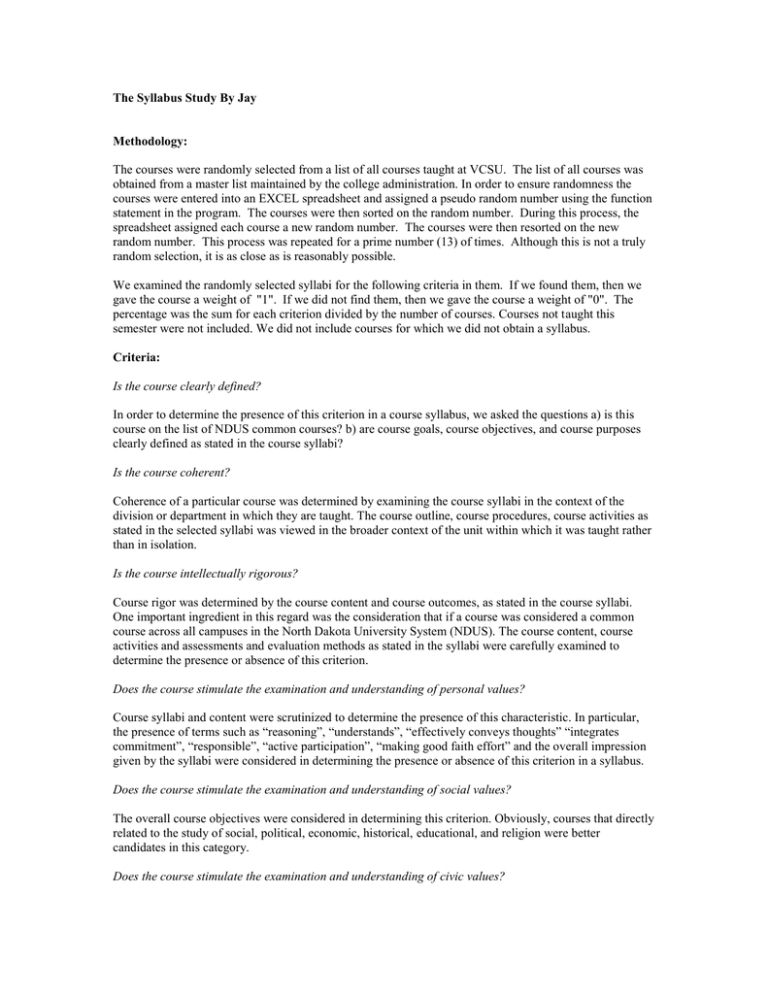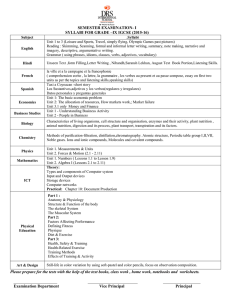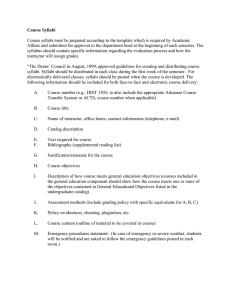Syllabus Study Methodology.doc
advertisement

The Syllabus Study By Jay Methodology: The courses were randomly selected from a list of all courses taught at VCSU. The list of all courses was obtained from a master list maintained by the college administration. In order to ensure randomness the courses were entered into an EXCEL spreadsheet and assigned a pseudo random number using the function statement in the program. The courses were then sorted on the random number. During this process, the spreadsheet assigned each course a new random number. The courses were then resorted on the new random number. This process was repeated for a prime number (13) of times. Although this is not a truly random selection, it is as close as is reasonably possible. We examined the randomly selected syllabi for the following criteria in them. If we found them, then we gave the course a weight of "1". If we did not find them, then we gave the course a weight of "0". The percentage was the sum for each criterion divided by the number of courses. Courses not taught this semester were not included. We did not include courses for which we did not obtain a syllabus. Criteria: Is the course clearly defined? In order to determine the presence of this criterion in a course syllabus, we asked the questions a) is this course on the list of NDUS common courses? b) are course goals, course objectives, and course purposes clearly defined as stated in the course syllabi? Is the course coherent? Coherence of a particular course was determined by examining the course syllabi in the context of the division or department in which they are taught. The course outline, course procedures, course activities as stated in the selected syllabi was viewed in the broader context of the unit within which it was taught rather than in isolation. Is the course intellectually rigorous? Course rigor was determined by the course content and course outcomes, as stated in the course syllabi. One important ingredient in this regard was the consideration that if a course was considered a common course across all campuses in the North Dakota University System (NDUS). The course content, course activities and assessments and evaluation methods as stated in the syllabi were carefully examined to determine the presence or absence of this criterion. Does the course stimulate the examination and understanding of personal values? Course syllabi and content were scrutinized to determine the presence of this characteristic. In particular, the presence of terms such as “reasoning”, “understands”, “effectively conveys thoughts” “integrates commitment”, “responsible”, “active participation”, “making good faith effort” and the overall impression given by the syllabi were considered in determining the presence or absence of this criterion in a syllabus. Does the course stimulate the examination and understanding of social values? The overall course objectives were considered in determining this criterion. Obviously, courses that directly related to the study of social, political, economic, historical, educational, and religion were better candidates in this category. Does the course stimulate the examination and understanding of civic values? The overall evaluation of the syllabi was governed by similar criteria as stated in the above category. Is there evidence of scholarship and research? Literature search, researched essays as a requirement, and term paper writing as stated in syllabi were considered in determining the presence of this evidence. Is there evidence of student-faculty intellectual interaction? Student-faculty interaction stated in syllabi. Is there evidence of student-student intellectual interaction? Group/Team work stated in syllabi.

